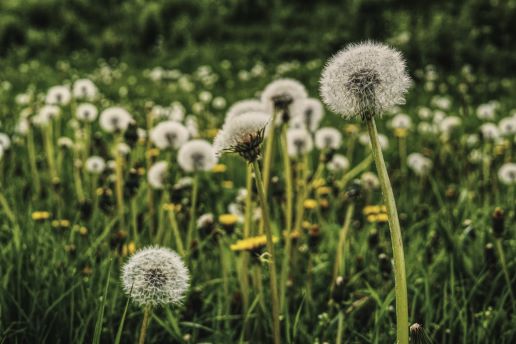
What is pollen pollution and how can we protect our health?
11 May 2023
Here we look at what pollen pollution and allergens are, and how we can protect our health.
What are the properties of a virus and pollen?
The recent coronavirus epidemic has raised the profile of the term ‘virus’ and we are no strangers to its effects. But what is a virus, and what is pollen, when both can have similar symptoms for our health?
Both pollen and viruses are not too dissimilar. They belong to microorganisms, and microbial contamination has common characteristics. There are many pathogenic microorganisms in the indoor air, and their survival and pathogenicity can last for a long time.
Diseases transmitted by airborne microorganisms can include lung cancer, tuberculosis, pneumonia, influenza, SARS, MERS, novel coronavirus COVID-19, pneumonia, chronic allergic rhinitis, and many others.
The biggest difference between viruses and bacteria is that viruses have no cell structure, no complete enzyme system, and cannot carry out independent metabolism. They can only parasitize organisms with cells and survive in the form of parasitism in the host body. Of course, this does not mean that viruses cannot be separated from the host at all. They can temporarily separate from the host and stay in the outside world in the form of dormant bodies. It has been recorded that the maximum survival time of the recent coronavirus on the surface of an object can reach more than 200 hours. The virus uses the enzyme system of the host cell to reproduce its own capsid or other components, which will mutate into the next generation of viruses after assembly.
The common pollen in spring has the characteristics of plant microorganisms, which may become the host of viruses. Pollen is also the one major pollutant in the air in spring and is an important cause of allergic diseases such as asthma. Pollen, spores and other bacteria and fungi in the air come from plants. The surface of plants can release a large number of microorganisms and viruses into the air through the wind.
Although pollen is easily inhaled into the nose and reaches deep in the lungs, which causes allergic hay fever and, in some cases, asthma, not all plant pollen can cause hay fever. Pollen must be antigenic to sensitize the human body to cause hay fever, yet it is the pollen of these few plants that has caused tens of millions of hay fever patients, and even become a serious social problem.
What are pollen allergies and allergens?
Allergens are antigens that can promote individual hypersensitivity.
According to statistics, up to 500 kinds of allergens have been found in the world. Pollen, fungal spores, and dust particles in the air are known as the traditional three antigens.
Pollen allergy is a common and frequently occurring disease, which can cause serious harm to human health. The clinical manifestations of patients with pollen allergy vary from person to person. The main symptoms are runny nose, tears, sneezing, itchy nose, and itchy eyes. It is often mistaken for a cold, and severe cases can induce tracheitis, bronchitis, asthma, and pulmonary heart disease. People of all ages can experience the symptoms of pollen allergy.
Interestingly, the inheritance of hay fever is rare. In most cases, due to long-term inhalation of chemical pollutants such as automobile exhaust and industrial waste gas, these chemical pollutants gradually accumulate in the body, and it is not until a certain age that the person is suddenly found to be suffering from hay fever.
Allergens can cause hydro dermatitis, asthma, chronic rhinitis, and other allergic diseases. Hypersensitivity pneumonitis is an allergic disease caused by the invasion of pollen or fungal spores in the air, causing transient infiltration of the lungs.
Common indoor air allergens mainly include:
- dust mite allergens
- pet allergen
- mold allergens
- pollen allergens
How to protect our health from pollen and allergens
The World Health Organization (WHO) believes that the total number of bacteria in indoor air exceeds 3 800cfu /m, and the risk of infection is obvious. The hygienic standard for the total number of bacteria in indoor air is 3 500cfu /m.
- Pay attention to ventilation and improve indoor air freshness.
Window ventilation is one way to purify indoor air quality. We advocate conditional ventilation.
- Keep the room clean and hygienic.
Clean the room carefully, wipe the surface of all objects with a wet towel once a day and increase the number of wipes if necessary. Try not to keep pets indoors. Bedding, blankets and carpets should be cleaned frequently and dried in the sun to avoid dust mites.
- Check your personal hygiene.
Be careful with spray-type cleaning agents, humidifiers, pesticides, mousses, and other cosmetics.
- Improve your own immunity.
Effective ways to improve immunity include nutrition, adequate sleep, moderate exercise and a good state of mind.
Latest News

Light, Air, and Mood: How Our Environments Shape Energy in Autumn
As the days grow shorter, many of us notice a shift in energy, mood, and focus. Less daylight…

Which Healthy Air Purifier is Right for Your Space?
Breathing Healthy Air: Supporting Families, Commuters, and Classrooms When it comes to the air we breathe, the spaces…

Breathe Better On the Road: Introducing the Healthy Air 30 Vehicle Purifier
Are you craving cleaner, fresher air during your daily commute or school drop off? Whether you’re battling pollen,…

